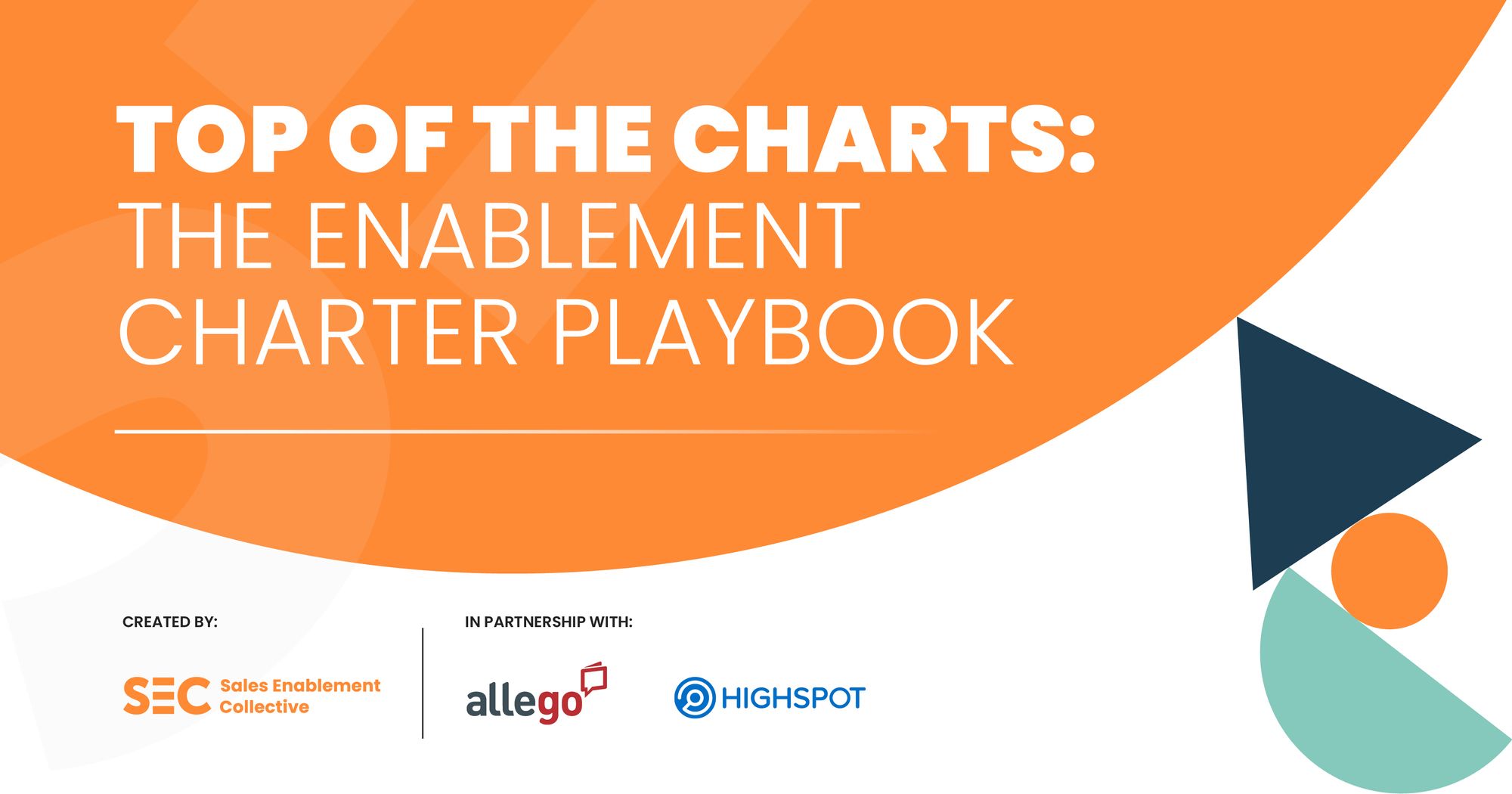Nobody can predict the future. But that doesn’t mean you can’t prepare for it.
Faced with shifting market dynamics and an ever-changing world of work, enablement practitioners must double down on delivering exceptional experiences to their revenue teams now to find success in the quarters to come.
From refreshing your strategy to maximizing the ROI of your enablement platform, here are the six questions enablement practitioners should be asking right now:
- Are you learning from the best?
- Is your strategy ready for the new world of sales?
- Do you know what great enablement looks like?
- Does your sales culture support learning and development?
- Does your sales enablement platform turn your strategy into action?
- Have you achieved operational excellence?
Let's dive in. 👇
1. Are you learning from the best?
Peer-to-peer insights are important in any category, but especially so in sales enablement.
Oftentimes, it can feel as if you are building the plane while you’re flying it, especially if you are building your organization’s first formal enablement program.
The ability to learn from those who have successfully overcome common enablement challenges is invaluable – which is why spaces like the Highspot Spark Community are so important.
This global community is designed to bring together users of the Highspot ecosystem to share best practices via discussions, content, and events.
In a world where your job requires you to expect the unexpected, the collective insights of your fellow practitioners can help you secure your success no matter what.

2. Is your strategy ready for the new world of sales?
The world of sales is in the throes of a great transformation. Beyond simply changing where we sell, research shows that over the past two years, the core values of buyers have shifted as well.
How you sell to and engage with customers is now just as, and in some cases, more important than what you are selling.
For enablement leaders, this means asking what needs to change about your go-to-market strategy – and whether your approach to enablement is capable of making those changes stick.
Start by reexamining the basics of your enablement program:
- What do reps need to do differently to meet the expectations of digitally-native, value-driven buyers?
- What initiatives does the company need to align to make these changes last?
- Do you have the right technology in place to make those changes actionable?
Clear, documented answers to these questions will ensure you can respond nimbly and effectively to anything the market throws at you.

3. Do you know what great enablement looks like?
At its core, great sales enablement is about making change stick – whether that change is a complicated cross-sell motion, or something simple, like helping your sellers do better discovery.
Yet change is notoriously hard to drive; reps, much like anyone else, are creatures of habit. They know what works for them and they aren’t interested in your newfangled ways.
To make change to stick, your enablement program must:
- Ensure the average rep knows exactly what’s expected of them, and where they can find the resources to execute
- Help reps build the confidence needed to try the new behavior with a customer
- Hold reps accountable for doing the new behavior in the real world and empower managers to coach and inspect it
If your program can achieve the above, you can effectively cross the chasm from idea to execution. Highspot’s VP of Strategic Services, Steve Hallowell, dives deeper into what putting these elements into practice looks like here.

4. Does your sales culture support learning and development?
Delivering effective sales training has long been a thorn in enablement’s side. Historically, training has been curbed by routine – think knowledge checks and endless video lectures – that does little to inspire curiosity or engage reps.
But training doesn’t have to be boring – and done right, it should enhance reps’ ability to execute your strategy.
The key here is to train the way reps want to learn. Build foundational knowledge with courses delivered via a modern e-learning platform, then save group time for high-impact activities, like Q&A, hearing from peers, and of course, live practice.
Most critically, learning and development must be a fundamental part of your sales culture, not a nice-to-have.
That requires giving reps dedicated time to train, empowering them with the tools, materials and coaching they need to master new skills, and rewarding them for being learn-it-alls.
An organizational-wide emphasis on training yields dividends in the adoption and impact of your strategy.
For more on this subject, hear best practices from Senior Director of LinkedIn Talent Solutions, Amy Borsetti.

5. Does your sales enablement platform turn your strategy into action?
Many of the strategies described here are implemented through your sales enablement platform, making your choice of vendor a cornerstone of your program’s success.
Whether you’re a first-time purchaser or simply curious as to what’s new in the market, focus your search on four key areas: equip, coach, training, and analysis.
These four areas speak to how you’ll turn your strategy into action: no matter what you want to achieve, you need to equip your reps with all they need to execute, from marketing content to sales plays.
You must then train your team on how to use that content and guidance, and coach them through practice and real-world scenarios. Finally, you must be able to analyze and measure the impact of your work to optimize your program.
Get a preview of how a modern sales enablement platform parcels these elements into high-impact, easy-to-use features here.

6. Have you achieved operational excellence?
Finally, none of the above is possible without tight alignment across go-to-market teams: your collaborators in marketing need to know what content to create to support your initiatives, your frontline managers need to know how to inspect and coach new behaviors, and so on.
Enablement leaders are natural orchestrators of go-to-market initiatives, but how can you rally cross-functional teams around the same cause? Via the humble sales play.
Sales plays excel at driving alignment because the process of building one forces teams to define what they want to accomplish, document it, and work together to achieve it.
The better your organization becomes at delivering sales plays, the easier it is to collaborate across boundaries, measure the impact of your work, and optimize your strategy.
Bain & Company’s Eliza Kennedy details how you can leverage this flywheel effect at your organization here.

Join 5,500+ of your peers in our ever-growing Slack community! Ask questions, share ideas, and network today.




